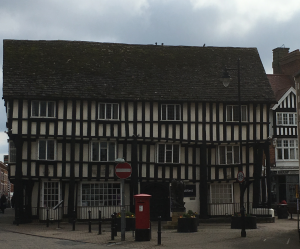 Matthew Saunders’ report for Historic England on ‘Developing a strategy for the future of the National Heritage List for England (NHLE): the sector’s perspective’, has a revised programme in its call for evidence – which includes a request for IHBC-specific feedback – so responses now should reach the IHBC [at consultations@ihbc.org.uk] by 21 January 2019 (or Matthew by 31 January).
Matthew Saunders’ report for Historic England on ‘Developing a strategy for the future of the National Heritage List for England (NHLE): the sector’s perspective’, has a revised programme in its call for evidence – which includes a request for IHBC-specific feedback – so responses now should reach the IHBC [at consultations@ihbc.org.uk] by 21 January 2019 (or Matthew by 31 January).
Matthew Saunders writes:
… Historic England commissioned me to carry out a national survey of Listing, the bedrock of all conservation casework…
The specific purpose is to define priorities for the future management and maintenance of the National Heritage List for England, in terms both of range and effectiveness.
The survey is to be far-ranging. The principal (but not the exclusive ) areas that I have been asked to explore are given on the attachment and I would value your feedback on all and any of them. In particular :
1. The current state of the Lists and what to do with the ‘legacy entries’, that is those that were not compiled with anything like the comprehensiveness of contemporary equivalents.
a) Should these ‘legacy entries’ be revisited, either systematically or selectively ?
b) How useful do you find the listing descriptions in these and later versions?
2. The present criteria for inclusion on the lists ( the existing HE Selection Criteria can be found on the HE website at historicengland.org.uk. The broader brush DCMS Principles of Selection are on the same website and a refreshed version of that was published today – please see https://www.gov.uk/government/publications/principles-of-selection-for-listing-buildings selection-for-listing-buildings. The changes over 2010 are very minor). HE know that I regard this as a key element and is one where I would especially value your thoughts.
a) After 1850 the criteria are progressively tougher. Do you feel that adequate weight is given to all periods after that date ?
b) Do you agree with the ‘1850’ cut-off date ? ( in essence, buildings that survive without damaging alteration and were built prior to 1850 are listed. Until recently that watershed was 1840 )
c) I am very interested in hearing about cases where listing has been refused for reasons that you find hard to accept. (The ‘marginal’ case will always be with us) Photos in such cases would be invaluable. If you happen to know what happened to the unsuccessful candidates, that would be a bonus.
d) Thematic surveys are still being undertaken by HE but the process has slowed. Are there particular building types or areas that you think should be included?
And again, in light of financial reality, how should this be achieved? www.historicengland.org.uk/listing/apply-for-listing/listing-priorities will give the current themes.
e) Bath saw the last of the systematic geographical resurveys and their successors, the Defined Area Surveys, have also come to a halt. Some historic settlements still labour with listing surveys that consist of a base assessment of the 1970s or 1980s with myriad spotlistings. Would you like to see any more geographical resurveys – if so which areas ? And how should this be achieved ?
f) How user-friendly do you find the process of applying for listing ?
g) How valuable do you find the existence of three grades ? Would you diminish or increase that number, bearing in mind that the proposal ten years ago to abolish Grade 11* was investigated but not pursued ?
3. Listing that is prompted more by historic rather than architectural interest
a) As a general rule, listing is less contentious where the asset combines architectural interest with historic but are the criteria sufficient honed to capture historic interest when this is being considered separately from architectural interest ? Do tell me your experience in seeking listing for historic interest when that is the only driver and how would you define historic interest ? ( The DCMS Selection Principles are relevant here ) And I would especially value any thoughts on how to protect intangible values through the lbc regime when that is based on the protection of physical fabric.
4. The relationship with other and overlapping means of protection/identification:
a) Conservation Areas
b) Local Lists
c) Building Preservation Notices
d) Assets of Community Value
e) Register of Parks of Gardens
f) Other bespoke informal designations by lpa’s and other agencies
g) Scheduling – although this survey will deal with Listing only and not Scheduling and will tackle scheduling only where there are issues of overlap.
- ‘Enriching the Lists’. Do let me know what experience you have of this initiative and its usefulness, as you see it.
- The relationship with other Government agendas
- This is not among the bulletpoints, but do let me know how you rate the importance of listing, both in its own right and within the portfolio of activities carried out by HE.
Please draw attention to anything else that you would like me to investigate and report on.
… I am tasked not to dream but to be practical.
… This report will be limited to England but I would appreciate any broader perspective that takes in current listing practice in Wales, Scotland and Northern Ireland – indeed countries outside the United Kingdom where there are precedents that are relevant…
For responses to the IHBC please email consultations@ihbc.org.uk
For more background see the IHBC Newsblogs
